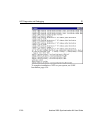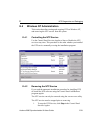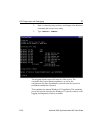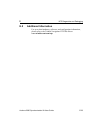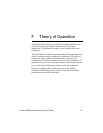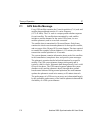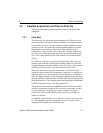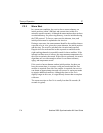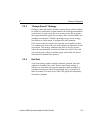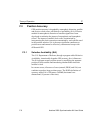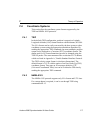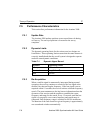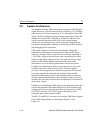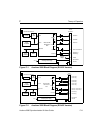
F-4 Acutime 2000 Synchronization Kit User Guide
Theory of Operation
F
F.2.2 Warm Start
In a warm start condition, the receiver has a current almanac, an
initial position (within 3,000 km) and current time (within five
minutes) stored in memory. Although the smart antenna does not have
an onboard battery for preserving memory, it can be initialized using
the TSIP protocol. To force a warm start, the almanac, time, and
initial position must be uploaded to the receiver.
During a warm start, the smart antenna identifies the satellites that are
expected to be in view, given the system almanac, the initial position
and the time. The receiver calculates the elevation and expected
Doppler shift for each satellite in this expected set and directs the
eight tracking channels in a parallel search for these satellites. If the
internal oscillator error is known, the smart antenna compensates for
the offset to optimize the search. If the offset is not known, the search
algorithms are set wide enough to allow for oscillator tolerance,
aging, and temperature errors.
If the receiver has an almanac and an initial position, but does not
have the current time, it executes a cold start search until the first
satellite is acquired. Once this first satellite is acquired, the receiver
can obtain an approximate time and will convert to warm start mode
to acquire additional satellites. Although the time to first fix is
slightly longer in this case, it is significantly shorter than a complete
cold start.
The warm start time to first fix is usually less than 50 seconds (40
seconds is typical).



